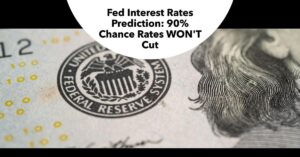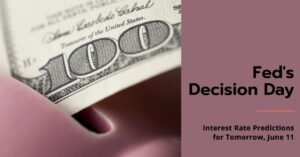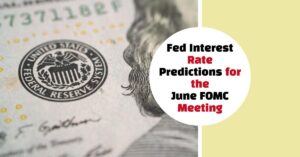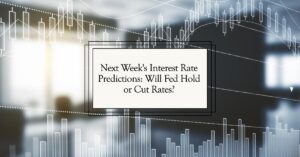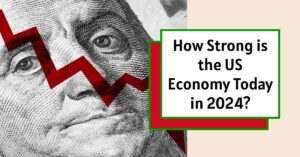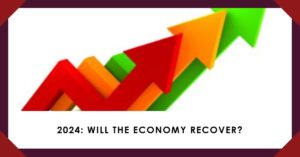As the Federal Reserve gears up for its next interest rate decision on June 12, the financial world is abuzz with speculation. The central question on everyone's mind is whether the Fed will implement a rate cut. However, the odds seem to lean heavily against such an outcome. Despite high inflation, experts say only a 10% chance of a cut today. Here are some predictions.
In the current economic climate, inflation has proven to be a tenacious adversary, hovering stubbornly above the Fed's target of approximately 2%. This persistent inflationary pressure has set the stage for the Federal Reserve to maintain a cautious stance.
According to a survey by FactSet, a consensus among economists suggests that the federal funds rate will remain unchanged, fixed within the range of 5.25% to 5.5%. This level, a peak not seen in the last 23 years, has been the status quo since the Fed's meeting in July 2023.
The implications of this decision are far-reaching. For consumers, the prospect of continued high rates means that borrowing costs will remain elevated, affecting everything from mortgage rates to personal loans. This is particularly impactful for lower- and middle-income individuals who feel the pinch of high inflation on essential goods and services, coupled with the added burden of expensive credit.
Investors, on the other hand, are parsing every piece of information for hints of a shift in the Fed's long-term rate trajectory. Earlier this year, Federal Reserve officials had forecasted three rate cuts; however, the persistent nature of inflation has cast doubt on this timeline. Now, the focus is on the Fed's upcoming meetings, with many economists predicting that if a rate cut were to occur, it would not be before the central bank's September 18 meeting.
Despite the current outlook, there is a glimmer of hope that inflation will gradually recede over the remainder of the year. This anticipated decline could pave the way for more favorable borrowing conditions in the future. Nevertheless, the Fed's cautious approach underscores the delicate balance it must maintain between fostering economic growth and containing inflation.
As the June 12 decision approaches, all eyes will be on the Federal Reserve. Will they hold steady, or will there be a surprise twist in monetary policy? Only time will tell, but for now, the odds of a rate cut appear slim, with the market assigning a mere 46% chance of a quarter-point reduction by the June meeting. The financial landscape remains on tenterhooks as the Fed deliberates the path forward in these inflationary times.
Forecast: How Many Times is the Fed Likely to Cut Rates in 2024?
The anticipation of rate cuts often sparks a wave of speculation and analysis among economists, investors, and consumers alike. Earlier in the year, Federal Reserve officials projected three rate cuts for 2024, a signal that was welcomed by those hoping for relief from high borrowing costs. However, the trajectory of inflation has cast a shadow over these forecasts.
Inflation has been a persistent challenge, with rates remaining above the Fed's target. This has led to a cautious approach from the Federal Reserve, with indications that any potential rate cuts would be carefully measured against inflationary pressures. The consensus among economists, as reported by FactSet, suggests that the first opportunity for a rate cut could come during the Fed's September 18 meeting, with about half of the economists predicting a reduction in rates at that time.
Despite the cautious stance, there is a sense of optimism that inflation will gradually decline over the remainder of the year, which could open the door for the anticipated rate cuts. The Personal Consumption Expenditures Price Index, the Fed's preferred gauge for inflation, showed a year-over-year increase of 2.7% in April, hinting at a possible easing of inflationary trends.
Financial markets have their own predictions, with futures markets at one point forecasting four to five quarter-point rate cuts in 2024. However, more conservative estimates from financial institutions like Goldman Sachs and Barclays suggest the Fed may only pencil in two rate cuts for the year, aligning with the Fed's forecast from September.
It's important to note that the Federal Reserve's decisions are not set in stone and are subject to change based on evolving economic conditions. The Fed's dual mandate of promoting maximum employment and stabilizing prices means that its policies must adapt to the dynamic nature of the economy.
As we look ahead, the Federal Reserve's actions will be closely monitored for any signs of a shift in policy. While the exact number of rate cuts in 2024 remains uncertain, the Fed's forward guidance and economic indicators will provide valuable clues for what to expect. For now, the consensus leans towards a conservative approach, with rate cuts being contingent on a sustained decrease in inflation.
For consumers and investors, these decisions have tangible impacts. Lower interest rates can ease the burden of debt and stimulate economic activity, but they must be balanced against the risk of reigniting inflation.
ALSO READ:
- More Predictions Point Towards Higher for Longer Interest Rates
- Interest Rate Predictions for Next 2 Years: Expert Forecast
- Interest Rates Predictions for 5 Years: Where Are Rates Headed?
- Mortgage Rate Predictions for Next 5 Years
- Mortgage Rate Predictions for the Next 2 Years
- Surprise Job Growth Throws Interest Rate Predictions into Disarray
